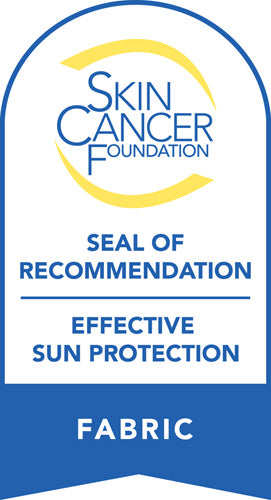It's estimated that one out of five Americans will develop skin cancer by the age of seventy. There are a variety of different reasons why someone might get skin cancer, from long sun exposure to genetic predispositions.
However, one of the more common reasons is that people don't protect themselves against ultraviolet radiation. All too often people think their only form of protection is sunscreen.
While sunscreen is important, you can also shield yourself using clothing specifically designed to protect against UV rays.
So exactly how beneficial is UPF-protected clothing? And what should you look for when shopping for this type of clothing? In this guide, we'll answer these questions so you can protect yourself and your loved ones from the sun.
What Is Ultraviolet Radiation?
Before we learn about UPF-protected clothing, it's first important to understand why it's necessary. The reason is ultraviolet radiation. This is a form of naturally occurring non-ionizing radiation that comes from the sun.
It can also come from non-natural sources like tanning beds. UV radiation is classified into different groups depending on the wavelength. These groups include UVA rays, UVB rays, and UVC rays.
These UV rays indeed provide us with important vitamin D production. Unfortunately, it can also have some health drawbacks.
In the short term, UV radiation can cause painful conditions like sunburns and sun poisoning. In the long term, these sunburn effects lead to premature skin aging and skin cancer. That's why it's vital to protect against it with both sunscreen and clothing.
What Is UPF-Protected Clothing?
Instead of SPF ratings (sun protection factor), clothing is measured through the UPF (ultraviolet protection factor) rating it provides. Most of the regular clothing you wear will provide some degree of UV protection.
However, it's not a lot. Most cotton shirts only provide a UPF rating of 5. The sun is still able to make its way through tiny holes in the t-shirt. Or, if the shirt is light enough, it can travel directly through.
That's where UPF clothing is different. This is clothing that's specifically designed to block out harmful UV radiation. It does this through the use of special fabric and tighter weave patterns.
The other benefit of UPF-protected clothing is that it's comfortable. Since it has a higher thread count, it feels soft and luxurious to the touch.
How Beneficial Is UPF-Protected Clothing?
It might be easy to be dubious about the benefits of UPF-protected clothing. However, as long as you're purchasing from a quality brand you don't have much to worry about.
UPF clothing has been scientifically engineered to protect against the sun. So when you wear it in combination with sunscreen, you won't have to worry about things like wrinkles and skin cancer.
Many brands also offer their UPF clothing in waterproof materials. That way, you can wear it while swimming or surfing in the water. Check out this guide to learn more about the effectiveness of UPF-protected clothing.
What UPF Rating Should You Look For?
Obviously, the higher the UPF rating on a piece of clothing, the more protection it's going to provide. The UPF rating refers to how much light the clothing lets in.
To figure this out, you simply make the UPF rating into a fraction. For example, if a piece of clothing has a UPF rating of 40, then it would only let in 1/40 of the light.
If a piece of clothing only lets in less than 2% of UV rays, it's designed as having a UPF rating of 50+. This is the highest it can go. The lowest rating it can get is UPF 15.
For your clothing, we recommend having a UPF rating of at least 30. However, if you have sensitive skin or want to take your sun protection seriously, you should consider investing in one that offers UPF 50.
What Should You Look for in Protected Clothing
The UPF rating is certainly a good place to start when looking for protected clothing. However, it isn't the only thing you should be looking for. You need to consider the amount of coverage that sun-protected clothing provides.
Does it come in a full-body suit? Or does it just protect your torso area? You should also consider the material. Lightweight options might be more comfortable.
However, the more tightly woven the material, the more protection it's going to provide you. Lastly, consider the color. You want clothing that comes in darker colors instead of lighter ones. These are better at absorbing sunlight.
How Long Does the Clothing Last?
Like any other clothing you wear, ultraviolet protection clothing isn't going to last forever. The more you use and wash it, the looser the fabric will become. This, in turn, will let UV rays in.
The good news is you don't need to replace the clothing that often. Typically, every two or three years, depending on the brand. In some cases, your UPF-protected clothing might come with a finish.
In these cases, with each wash, some of the finish will come off. Make sure to check the tag in this situation. It will let you know how many washes it can go through before it needs replacing.
Should You Still Wear Sunscreen?
It's indeed much easier to throw on a shirt than reapply sunscreen. So do you need to do both? A recent study found that combining sunscreen with ultraviolet protective clothing is the best way to get sun protection.
So to ensure that all your bases are covered, we recommend using both. At the very least, you should still be applying sunscreen to your arms, face, and any other part of your body that isn't covered by UV-protective clothing.
Need UPF-Protected Clothing? Explore BloqUV
We hope this guide helped you answer the question, "How beneficial is UPF-protected clothing?" As you can see, as long as you buy from a quality brand, UPF clothing has numerous protection benefits.
We here at BloqUV have become a leader in the UPF-protecting clothing industry thanks in large part to our proprietary fabric.
It's able to block out 98% of UVA/UVB rays. So if you're ready to get the protection you need, explore our clothing collection today.



